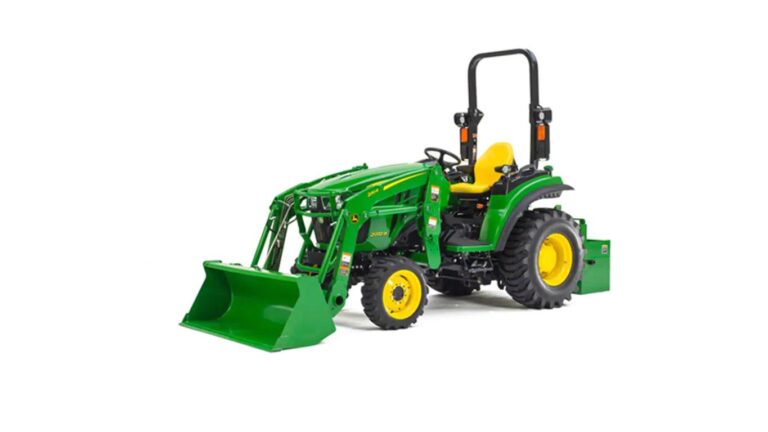
John Deere 2032R vs 3033R
Unsure if you should choose the John Deere 2023R or the John Deere 3033R? They’ll both deliver the quality you deserve, but it’s important to consider what each model provides so that you can make the right decision for your needs. Learn more about the similarities and differences between these two tractors, or reach out to our team if you have any questions!
The Similarities
When comparing the 2032R vs 3033R, there are plenty of similarities between the two compact tractors. You can expect the same quality from both options, and they both operate with 4WD and deliver a performance you can count on for years to come.
Differences Between the 2023R and 3033R
You’ll find that these two tractors have a lot of key differences to help influence your decision. These range from electrical and final drive to fuel capacities, hydraulics, and transmission. Here are the most important differences between the two models:
Lift Capacity – If your material moving needs don’t exceed 1,356 lbs, then the 2023R should suffice, but if you need lift capacity up to 2,194 lbs, then the 3033R will provide you with all you need.
Cab – The 2023R only comes with an open station whereas the 3033R is offered with either a cab or open station configuration.
Size – The John Deere 3033R is 53.1” wide while the John Deere 2023R is only 47.1” wide – making it slightly more usable in tight spaces around your property. Another consideration from this is the turning radius; with brakes, the 2032R can turn in 9.02 ft. (9.84 ft. without brakes) whereas the 3033R can turn in 8.8 ft. (9.2 ft. without breaks).
Engine – If you prefer a diesel power plant, you’ll want to stick with the 3033R. The 2032R, however, comes with direct injection. The 3033R falls in line with Final Tier 4 emissions compliance, reducing any issues you might have from other agencies.
Power Take-Off – The PTO HP for the 3033R is 24.3, whereas the PTO HP is 24.2 for the 2032R.
Which one is right for you?
When you’re deciding which tractor makes sense for your needs, hopefully comparing the 2032R and the 3033R side by side can help. When you’re needing a tractor that aligns more with agency regulations, the 3033R offers more functionality for external compliance agencies. However, the 2032R Compact Tractor should help you achieve most of what you need with additional features.
While the 3033R Compact Utility Tractor is part of the 3 Family, the 2032R Compact Tractor is part of the 2 Family. One of the most important aspects of this difference is the lifting capabilities. If you need to lift more, the 3033R is the obvious choice. However, the 2032R delivers plenty of capabilities and even offers a very similar power take-off horsepower.
Dimensions and size are such important factors to consider when you’re upgrading your equipment. The John Deere 3033R width is more than the 2032R, which impacts you in terms of projects and storage.
For a lighter option, the 2032R is a great choice that makes the most of your needs and your budget. However, if you need cab options, then the 3033R is the right choice for you. Not sure what tractor to choose? Contact your nearest Papé Machinery Agriculture & Turf location to speak with our team about your options!





